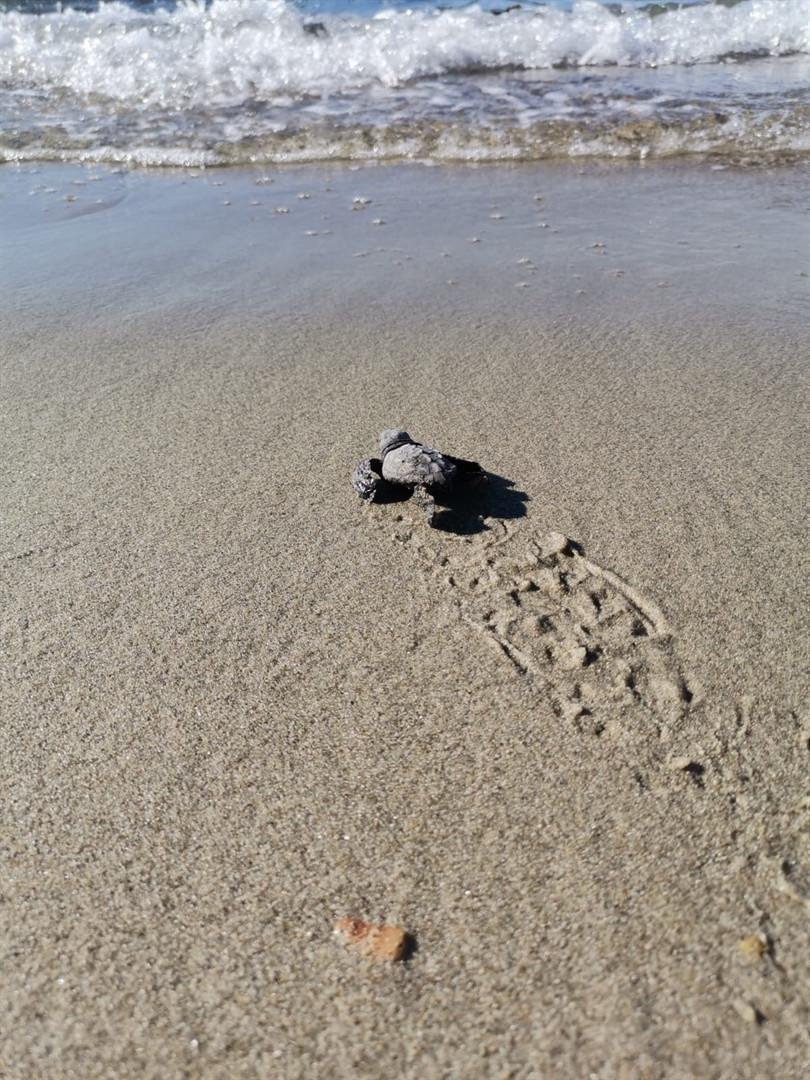
Experts, who have been carrying out studies in the Marmara Sea, have detected a Caretta caretta nest, which is often seen on the beaches between the Aegean province of Muğla and Hatay in the Mediterranean, with 32 newly-hatched Caretta caretta babies out of 50 eggs in the nest.
Experts at Çanakkale Onsekiz Mart University (ÇOMÜ) Sea Turtles Research and Application Center (DEKUM) found the nests on the beach of Eceabat district, located within the borders of the historical Gallipoli Peninsula.
Speaking to the state-run Anadolu Agency, DEKUM director, Professor Şükran Yalçın Özdilek said that finding the Caretta caretta nest in Marmara was very important.
Describing the Caretta caretta as intelligent animals that have existed for 65 million years, Özdileks said: “Caretta caretta nests are located in a region starting from Muğla and extending to Hatay. They have a nesting ground in the Mediterranean. Recently, very few Caretta caretta nests were seen on some beaches of İzmir, namely Kuşadası, and around Urla last year. But until now, they were never seen in the north of İzmir, Northern Aegean and Marmara. This is the first time in the region.”
She stated that they had encountered the nest on the beach of a hotel in Eceabat, located in the sandy area in the south of Saros Bay.
Stating that this exciting discovery was a surprise for them, Özdilek said, “We have been predicting the possibility of a nest here for years. As DEKUM, we have been working on this issue for 10 years. We did not come across such a nest during our expeditions too. It has made us very happy to find it in our region.”
Noting that policies for the protection of sea turtles were developed over the recent years, Özdilek said the number of Caretta caretta might have increased because it was a species under protection.
Talking about the old times and existence of turtles, Özdilek said, “In old times, books written in 1918 tell that herds of turtles were seen while passing by ships near Gallipoli, but they were described as land turtles, not sea turtles. One thinks why there is such a herd of turtles. Perhaps these places were nesting sites in the past. Of course, we don’t know about it right now.”
Noting the significance of the nest seen for the first time in the Marmara region, she said: “It is very important to have a nest in the north not only for our country but also for the whole Mediterranean and the whole world of science. We are constantly talking about global climate change and warming of the waters. These can have multiple reasons. All will be scientifically studied.”
Selma Kırbeci, who is doing her master’s degree at the Department of Biology at ÇOMÜ, said that she has been working on the nutrition of sea turtles.
Thinking that the mating season for the turtles is over and the protection and monitoring works in Hatay are complete, Kırbeci said they had very special moments with this discovery.
“When we checked the nest, we found that there were some 50 eggs. We released the 32 surviving babies to the sea. It was very surprising because turtles are rarely nesting during the middle and end of August, but seeing the Caretta caretta, this was a bit more extreme situation for us.”
“We estimate that the female laid her eggs between Aug. 15 and 20. It is very unlikely that nests are found in October, which is colder. When we look at the number of eggs, there is now 70 percent success in the nest we found. This is a very good situation for Çanakkale and our center,” she added.